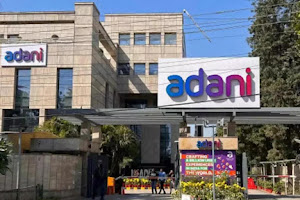
Carbon capture and utilization are growing fields of research focusing on reducing CO2 emissions. A recent United Nations report says that carbon capturing will no longer be an option if we have to save the planet from the increasing problem of Climate Crisis.
A group of Indian scientists at Indian Institutes of Science Education and Research (IISER), Kolkata, has discovered a new way to synthesize new solid adsorbents for CO2 capture and utilization. Here, Adsorption is a process in which pollutants are adsorbed on the solid surface.
For an uninitiated, Adsorbent is different from 'Absorbent' !. Adsorbent refers to a material which allows a dissolved solid, gas, or liquid to adhere to its surface. An absorbent, on the other hand, is a material which allows gases and liquids to permeate it uniformly.
Professor Rahul Banerjee’s group at IISER-Kolkata, with support from Department of Science & Technology (DST), Govt. of India under Mission Innovation program, has demonstrated a strategy to synthesize novel solid adsorbents, especially for CO2 capture and CO2 utilization.
Interestingly, this discovery of new material from IISER comes within a month after Professor Deepak Dhar of the same institute but different location (IISER-Pune) becomes first ever Indian physicist to receive the prestigious Boltzmann Medal for his contribution in the field of statistical physics.
Prof. Banerjee’s group has discovered special types of nanoparticles or microparticles which can capture CO2 in their micro and mesoporous voids.
To help you with few scientific vocabulary coming ahead in this article -- 'Zeolites' are microporous, 3-dimensional crystalline solids. And, 'Janus' particles are special types of nanoparticles or microparticles whose surfaces have two or more distinct physical properties. This unique surface of Janus particles allows two different types of chemistry to occur on the same particle.
The good choice of 2D graphene sheets as a grafter helped the researchers to design and create COF-graphene Janus thin films through the interactions (non-covalent) between the COF and graphene, rendering flexible porous Janus films at the DCM (Dichloromethane) -water interface.
This newly designed COF-coated zeolites could be an excellent candidate for CO2 storage in the industry due to their high surface area and increased chemical stability.
The high CO2 uptake for the COF coated zeolites, even after treatment with weak acids makes it appropriate for industrial purposes. The COFs coating prevented the degradation of zeolite structure from moisture, weak acids, and water. The CO2 uptake data for COF coated zeolite at 1 bar, 293K is 132 cc/g, supersedes the CO2 uptake data of zeolite under the same condition.
This interestingly new materials with distinct physical properties on its surfaces have been synthesized include porous Covalent organic frameworks like Covalent Organic Framework (COF) -graphene Janus thin films, which are ultralight in weight, published in Journal of 'American Chemical Society’ , and porous covalent bonded organic nanotubes published in Nature Chemistry, while COF coated zeolite published in ‘Journal of American Chemical Society’.
 |
The good choice of 2D graphene sheets as a grafter helped the researchers to design and create COF-graphene Janus thin films through the interactions (non-covalent) between the COF and graphene, rendering flexible porous Janus films at the DCM (Dichloromethane) -water interface.
This newly designed COF-coated zeolites could be an excellent candidate for CO2 storage in the industry due to their high surface area and increased chemical stability.
The high CO2 uptake for the COF coated zeolites, even after treatment with weak acids makes it appropriate for industrial purposes. The COFs coating prevented the degradation of zeolite structure from moisture, weak acids, and water. The CO2 uptake data for COF coated zeolite at 1 bar, 293K is 132 cc/g, supersedes the CO2 uptake data of zeolite under the same condition.















 IndianWeb2.com is an independent digital media platform for business, entrepreneurship, science, technology, startups, gadgets and climate change news & reviews.
IndianWeb2.com is an independent digital media platform for business, entrepreneurship, science, technology, startups, gadgets and climate change news & reviews.



